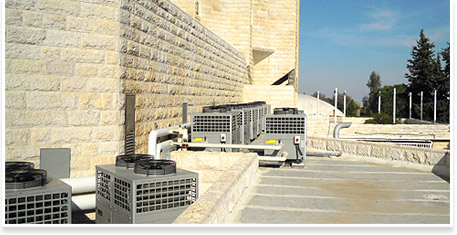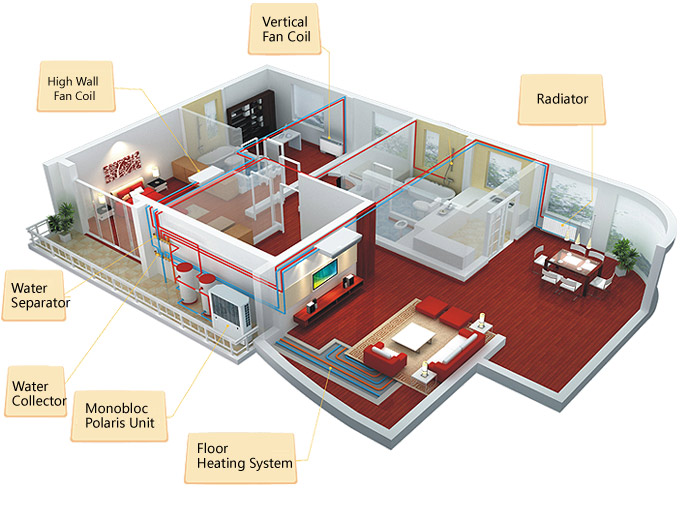The new developments in air source heat pump technology is much greater than it was 30 years ago. They are now more reliable, more accessible, and easier to operate and install than ever. They are equally effective in large and small homes. Most air source heat pumps can be converted into an AC system for the warmer months with just a simple reversal of the air flow process.
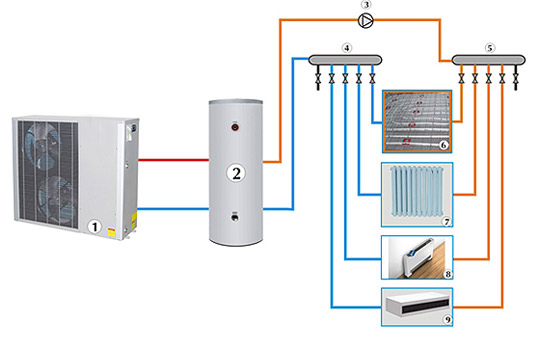
1.Main Unit
2.Heat Storage Tank
3.Circular Pump
4.Water Collector
5.Water Separator
6.Floor Heating
7.Radiator
8.Vertical Fan Coil
9.High Wall Fan Coil
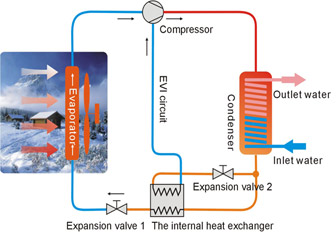
The heat pump with EVI circuit, can heat vigorously under -25℃ , and the outlet water temp can arrive at 60℃.
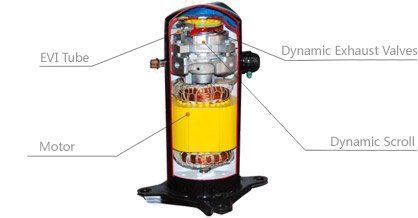
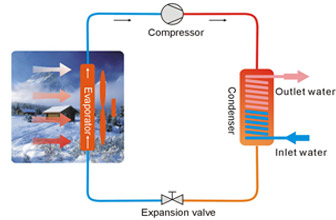
The system heating capacity is decreasing when the ambient temp under-7℃, the cop drooping, and can not work safely, the highest outlet water temp is 55℃
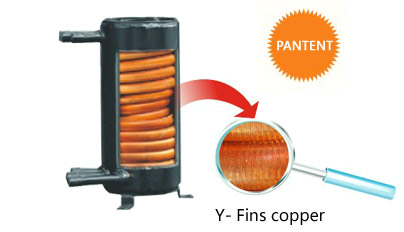
This increase the heat exchange area, improving the liquid wettability and evenly distribution on the surface of copper, reducing water film, and improving efficiency.Using tube in shell heat exchanger(Independent invention patent). The water temperatures arrive at 60℃, and can be widely applied in preparation for heating and hot water.
The thickness of copper pipe is 0.8-1.2mm, there is no welding inside the pipe. With 100% pressure-bearing properly, the copper pipe is without any leakage under 5MP pressure test.
The heat exchange copper coil is in spiral distribution and with compact structure. For small gap of refrigerant passage, this can ensure effectiveness of heart exchanging, and prevent lubricant accumulation.
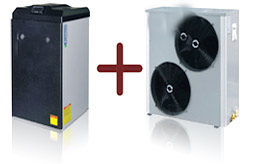
The split designs is with the compressor and the waterpipe both are built in the indoor unit. It ensures less heat loss and perfect anti-freezing protection when the unit is running under the low temperature.
Outside fin effcient non- phosphate copper, the area of heat -exchanging is 3.7 times of smooth brass, and the high heat exchange efficiency.
The installation of an air source heat pump provides effective heating and cooling for any home and can deliver up to three times more heat energy than the system actually uses. Air source heat pumps work well in either a cool or warm climate, but different styles and versions have also been made to suit each climate according to its needs.
The Cold Climate Heat Pump has been developed for just that; dealing with a colder environment in order to convert cold air into warm air for the home. The outside coils of the system takes heat from the air and passes it through the liquid refrigerant turning it into a gas. The gas then moves to the inside coils that release heat which then turns condenses the gas back into a (much warmer) liquid that heats the air for the home.
